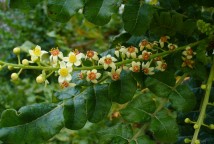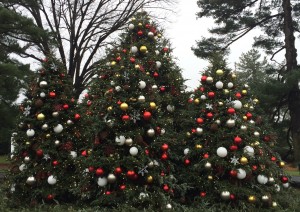Like most city dwellers, I often yearn for green spaces to recharge and clear my head from the daily stresses and worries of modern life. One of my favorite retreats is the New York Botanical Garden.
The Garden’s education center offers several classes. Although some are geared to botanists and horticulturists who are working toward professional certificates, others are accessible to the general public. I chose to attend a class titled “Frankincense and Myrrh.”
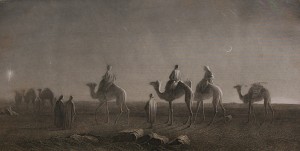 I first heard about frankincense in the Christmas story about the gifts of the Magi, along with gold and myrrh. Later, I associated the smell of Frankincense with going to church, especially around the holidays.
I first heard about frankincense in the Christmas story about the gifts of the Magi, along with gold and myrrh. Later, I associated the smell of Frankincense with going to church, especially around the holidays.
A few years ago, when I started using essential oils in aromatherapy, frankincense became one of my favorite oils for relaxation and meditation, especially when combined with myrrh or sandalwood.
After I joined the direct selling branch of Neal’s Yard Remedies, NYR Organic, I became familiar with the amazing properties of frankincense in their effective skincare products. The women of the Samburu tribe in Kenya collect the Frankincense resin used to steam distill the essential oil in Neal’s Yard Remedies’ Frankincense Intense and Rejuvenating Frankincense skincare product lines.
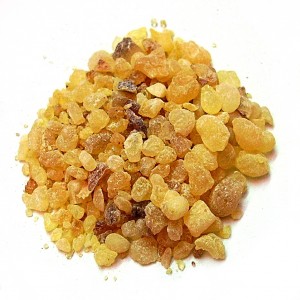 Frankincense was considered to be as valuable as gold in ancient Egypt, Greece and Rome. It was used in Egypt to preserve mummies and in mortuary rituals in other parts of the world. It was also used as an antiseptic lotion to heal the wounds of soldiers in battle. Frankincense was prescribed for a bewildering array of conditions, sometimes as medicine for healing, other times for superstitious or just bizarre reasons. For example, it was fed in large quantities to elephants to enrage them before battle.
Frankincense was considered to be as valuable as gold in ancient Egypt, Greece and Rome. It was used in Egypt to preserve mummies and in mortuary rituals in other parts of the world. It was also used as an antiseptic lotion to heal the wounds of soldiers in battle. Frankincense was prescribed for a bewildering array of conditions, sometimes as medicine for healing, other times for superstitious or just bizarre reasons. For example, it was fed in large quantities to elephants to enrage them before battle.
My class instructor mentioned a detailed and very expensive reference book, The Plants of Dhofar. With a price tag of $250, I won’t be buying it anytime soon, but I would love to look through it and read it. The Frankincense chapter from the book is an extensive account full of colorful anecdotes throughout history.
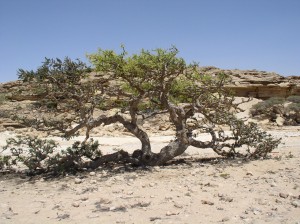 Along with other types of resin, such as storax and mastic, Frankincense and myrrh are part of the tree family called the Burseraceae. Found in many parts of the world, resins are classified as either soft (balsams) or hard (copals) and also as either oleoresins (many essential oils) or gum-resins (myrrh.)
Along with other types of resin, such as storax and mastic, Frankincense and myrrh are part of the tree family called the Burseraceae. Found in many parts of the world, resins are classified as either soft (balsams) or hard (copals) and also as either oleoresins (many essential oils) or gum-resins (myrrh.)
Resins are further classified for commercial uses as damars (used in enamels, furniture and shoe polish); copals; elemis (used in adhesives, waxes, inks, perfume and engraving); ambers (used in perfume and to make jewelry); and rosins (used in inexpensive varnishes.) When the instructor’s lecture veered into the chemical and molecular composition of the various resins, and then to the architecture of leaf veins, I started to feel out of my depth. Nevertheless, my curiosity has been piqued and I’d like to learn more about botany and the life of plants in the future.
After a brief walk during a break, I was in the elevator on my way back to the classroom, when a woman standing next to me said:
It doesn’t matter what kind of day you are having, walking around in the Garden makes everything better.
I smiled and nodded; one of my reasons for taking a class onsite was that I would have another chance to walk around the beautiful, restorative grounds of the Garden.
All the class participants got a gift of frankincense resin and a charcoal ring from the instructor. I’m looking forward to burning it on Christmas Day.
Here is a photo I took of the seasonally decorated conifers near the entrance:
I’m looking forward to more classes and visits to the Garden. Stay tuned!
Photo credits 1. Boswellia sacra, by Scott Zona, via Wikimedia Commons 2. Star of Bethlehem, Magi, Holy Bible, Etching, 1885, via Wonderlane and Flickr 3. Frankincense (Olibanum resin) by Peter Presslein, via Wikimedia Commons 4. Frankincense tree, via Wikimedia CommonsCategories: Green spaces, New York City, Our Times

